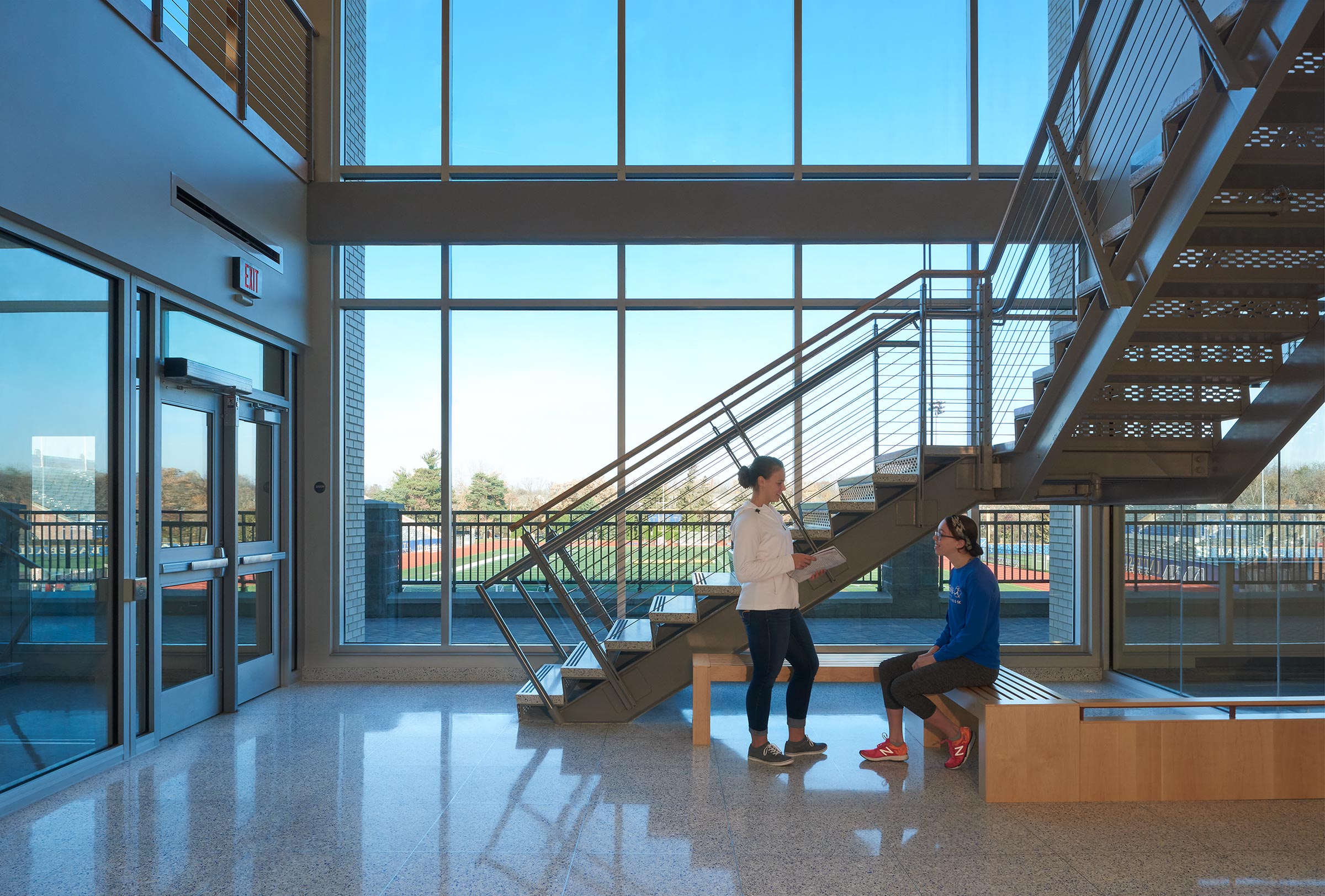KEY TAKEAWAYS
Code & Barriers Meet building code requirements with barriers that will protect and decrease the spread of disease.
Fire-Safe & COVID-19 Safe Barriers must be fire-safe as well as COVID-19 safe.
Entry & Exit Accessibility Exits and entryways must meet accessibility and walkway requirements as well as social distancing guidelines.
Businesses and institutions are implementing social distancing guidelines for their building occupants by introducing protocols and interior materials that physically divide and separate people to decrease the spread of COVID-19. While these safety measures are crucial, it’s equally important to maintain accessibility and fire and life safety.

Barriers/Dividers
When including new barriers, the NYS Department of Labor (DOL) requires markings on glass doors and adjacent glazing in buildings to avoid injury due to walking into glass. Though many glass or plastic dividers or barriers are not directly next to doors, they may be in an egress accessway and potentially cause injury. Adding markings or considering space planning to avoid being misinterpreted as a walkway helps to avoid injury. Barriers should never interfere with fire sprinkler systems.
Glass dividers should be safety glass, laminated, or tempered − not float glass. The NYS Building Code has additional requirements for glass, especially in hazardous occupancies.
Though not specifically called out or required for all applications, reducing the amount of plastics, or using Class A fire-rated plastics, creates a safer environment.
Check-out counter accessibility is required, so it’s important to avoid obstructions that preclude access to transactions.
 Entryways/Exits
Entryways/Exits
If limiting the use of stairs, doors, entries or exits to distance patrons and staff, it is important to identify how these limitations may impact specific width, number of exits and other egress requirements. Wayfinding and signage can be used to identify these requirements and occupancy limitations. Never decrease or obstruct emergency exits.
Face coverings can create a visual obstruction, making it difficult to see when walking − a potential hazard in public places where a patron might not be familiar with the layout and miss obstructions such as curbs or steps.
The Accessible and Usable Buildings and Facilities International Code requires, on certain projects, that steps/stairs have 2-inch stripes of contrasting color to signify where the tread differs from the riser of the stair to aid the visually impaired. It might not be a requirement to mark an existing curb, however, creating contrasting stripes with tape can be a temporary solution and create a safer condition for patrons. Depending on location, a more permanent design solution can be integrated into tile, carpet, or rubber, helping those who have difficulty looking down, are carrying objects, or wearing masks.
Conclusion
As design professionals, we understand building codes and requirements for buildings and projects. These suggestions may not be mandated and there may be other accessibility and safety requirements to consider. However, to ensure that new elements supporting COVID-19 safety measures meet all building codes and support health, safety, and wellness, discuss proposed changes with a design professional or code enforcement authority. Each project is unique and depends on occupancy type and the extent of change or renovation. It is recommended that a local architect, engineer, or a NCIDQ Certified Interior Designer be consulted who may be able to assist with the design and process.

